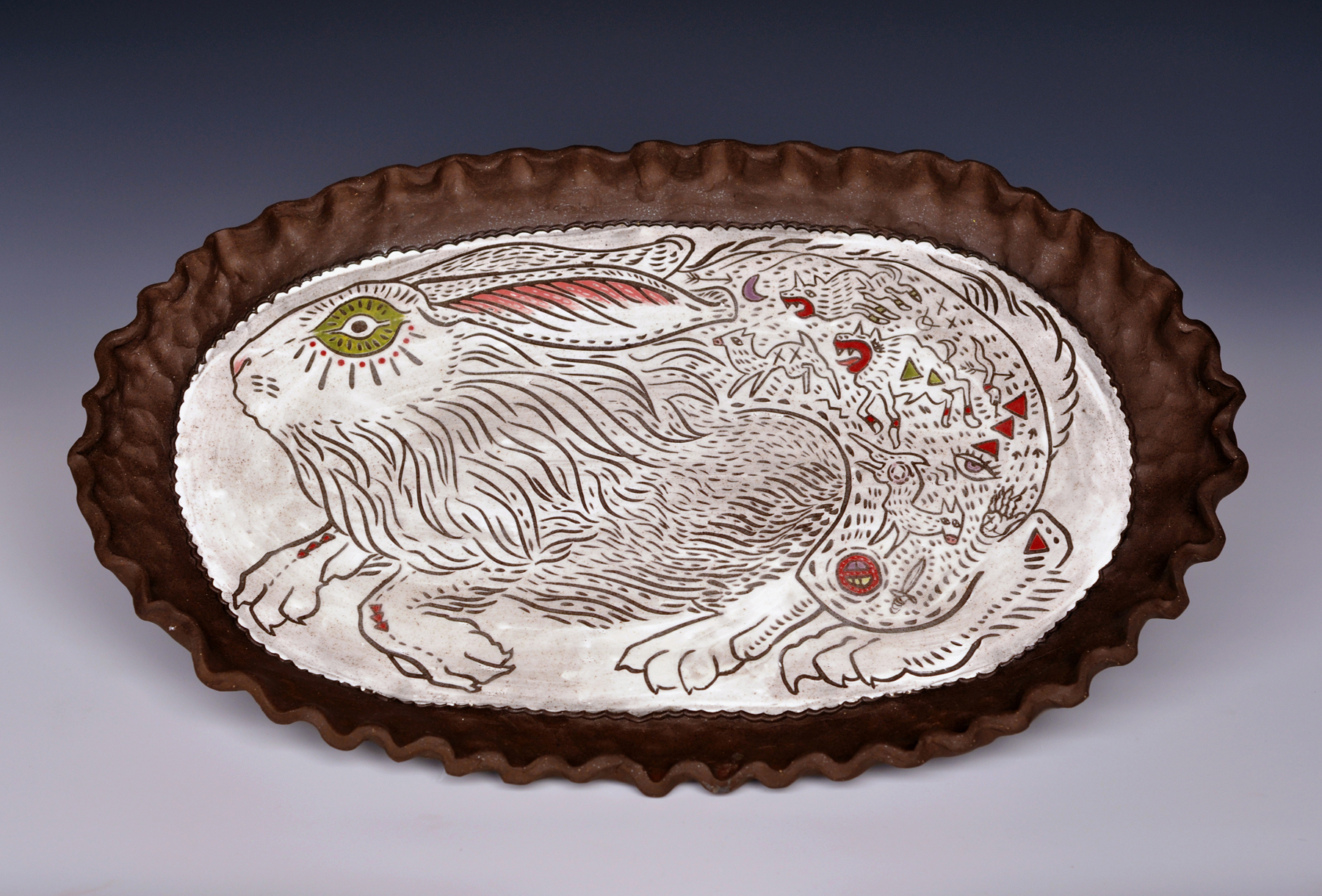June 21, 2016
Silver Run Ceramics
Maker Spotlight
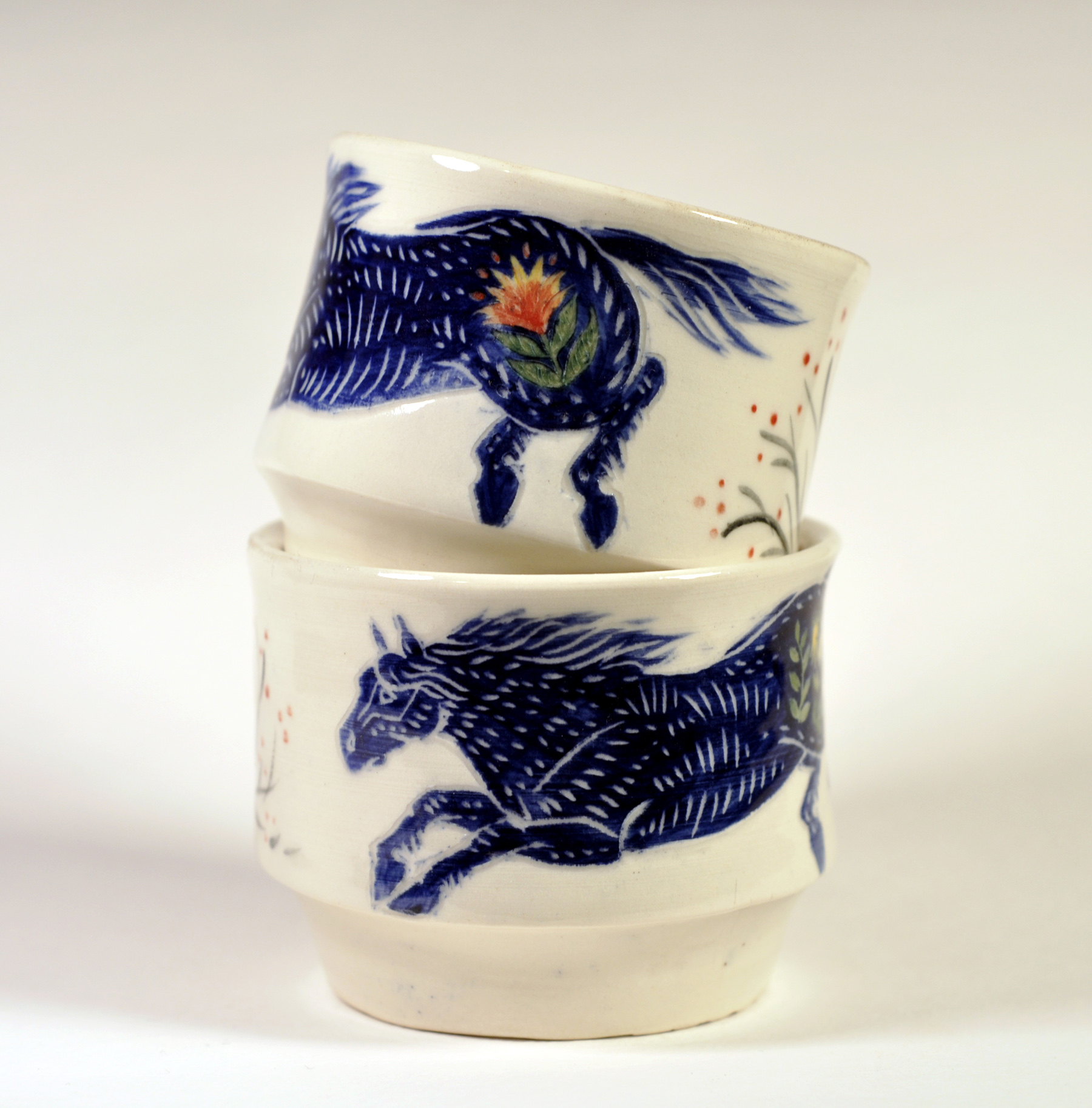
When detailed illustration meets the texture of clay, magic happens! If you need proof, Silver Run Ceramics has ceramic piece after piece that shows off what happens when two artists understand true collaboration. Michelle Lyn Strader and her partner Frederick make up Silver Run Ceramics, and gives us a glimpse into the quiet and artful farm life.
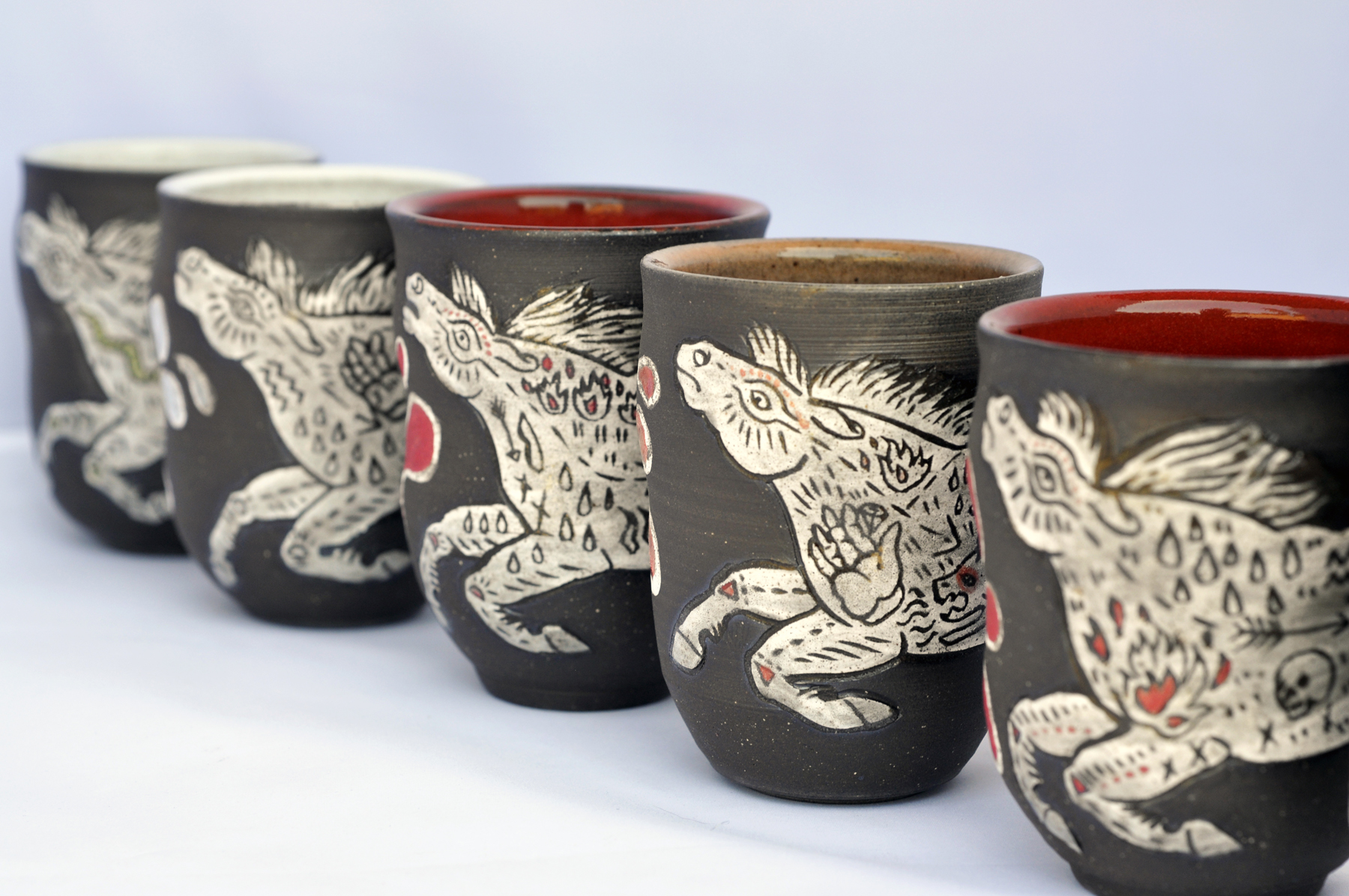
Where did your business name come from? Is there an interesting story behind it?
Our business name, Silver Run Ceramics, comes from the road where we live in rural Kentucky. Much thought and debate went into the origin of our name. We were hesitant to go with it at first, simply because it came so easily. Our home, farm, and studio are sanctuaries where we are able to create these beautiful things, and that felt very significant. Shortly after moving to Kentucky, we learned there are other makers and crafters that live on Silver Run Road as well. One of our neighbors pioneers Silver Run Ranch, where he raises Alpacas, harvests the wool, and creates brilliant textiles. Another close neighbor is a farrier who breeds and trains horses, going by the name of Silver Run Stables. It seemed fitting for us to follow suit with Silver Run Ceramics.
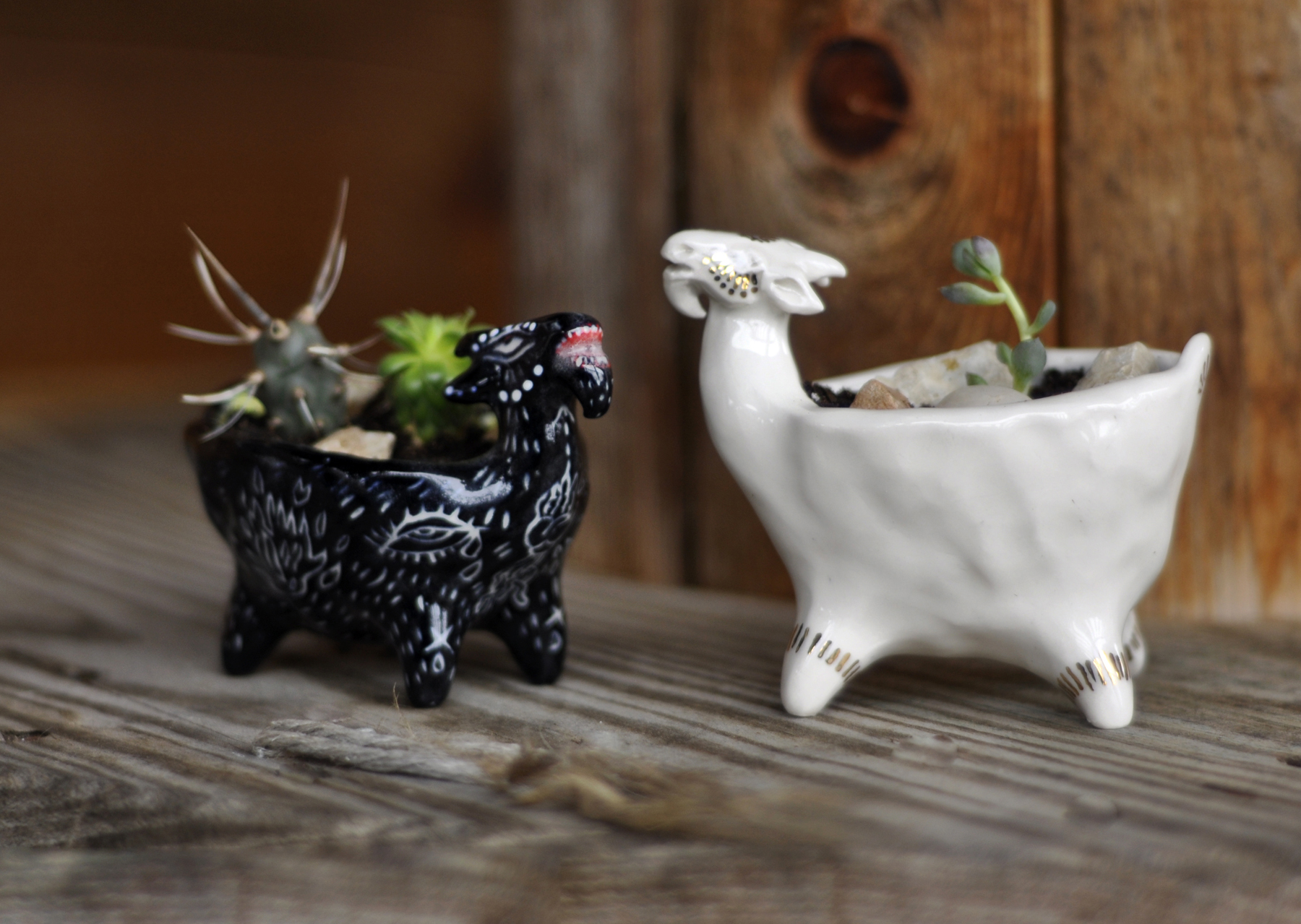
Have you always been passionate about design?
I have always been art-minded, with a sensitivity towards aesthetics. I have a fine arts background, and I’ve had a lot of creative type jobs along the way that have helped inform my practice. I have spent time as a cake decorator, a sign maker, a framer, a graphic designer, and an art teacher. One of the challenges I enjoy most about working in the ceramics field is finding the balance between form and function. It feels very special to have the ability to take an ordinary object, such as a coffee mug, and transform it into a unique, functional piece of artwork.
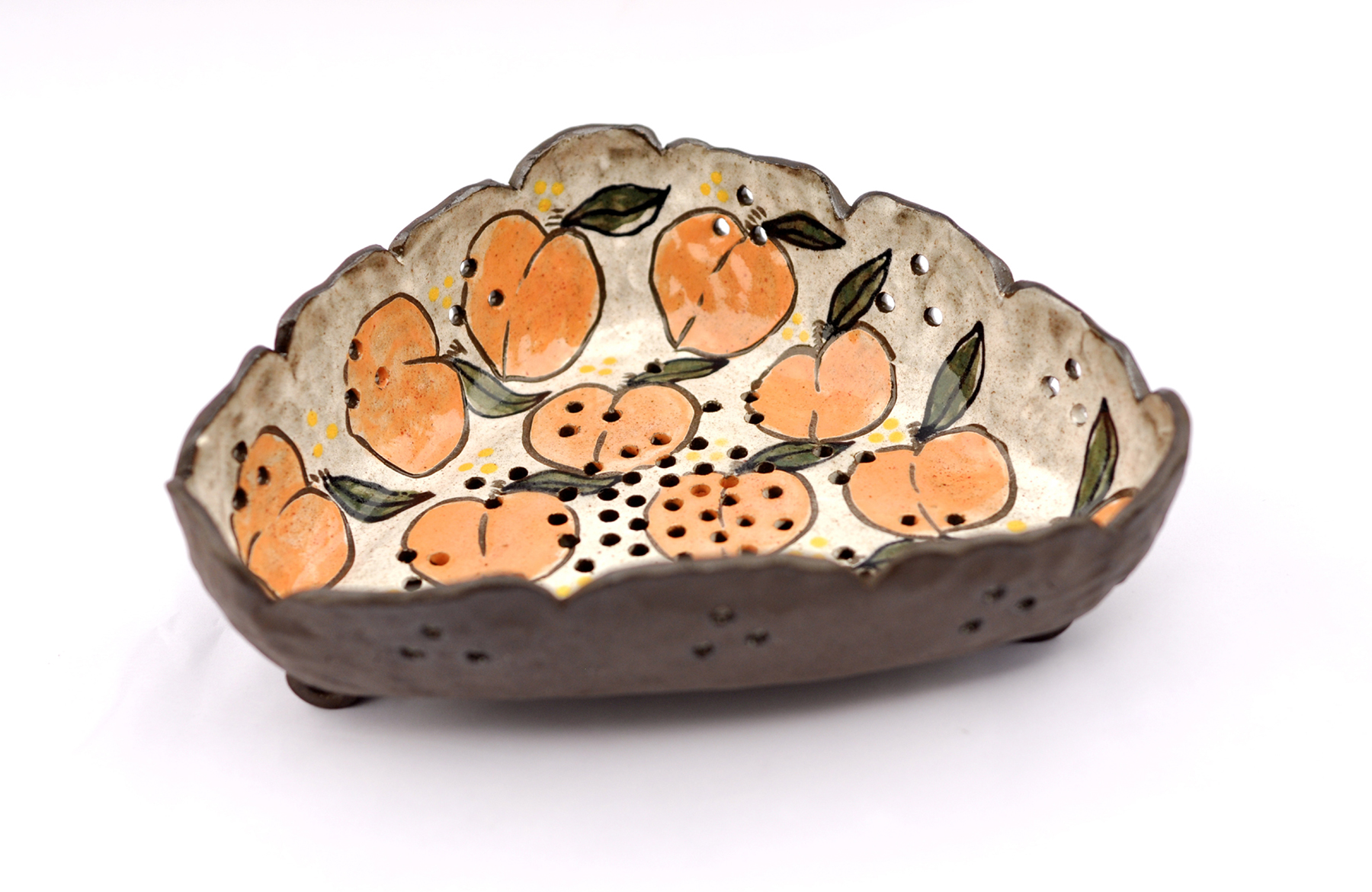
Why did you start working in this particular craft?
I took my first ceramics class in high school, and later in college I chose to work in clay while completing the sculptural component of my art degree. I attended Pratt at Munson Williams Proctor, where I studied with Bryan McGrath and Vincent Clemente. I followed that experience with a B.F.A. (in photography of all things!) from The College of Saint Rose in Albany, NY. I was reintroduced to clay later on in graduate school when I was working on my Masters in Art Teaching. It was at that time I met my partner, Frederick Bartolovic. Frederick had studied sculpture and ceramics at the University of Arizona and at Rhode Island School of Design, and is currently the ceramics professor at Marshall University. Not long after joining forces, we found ourselves working collaboratively, wedding Frederick’s clean aesthetics and propensity for construction with my organic, layered illustrative techniques. Silver Run Ceramics is truly a collaborative effort between Frederick and I, as it uniquely highlights our individual strengths as artists.
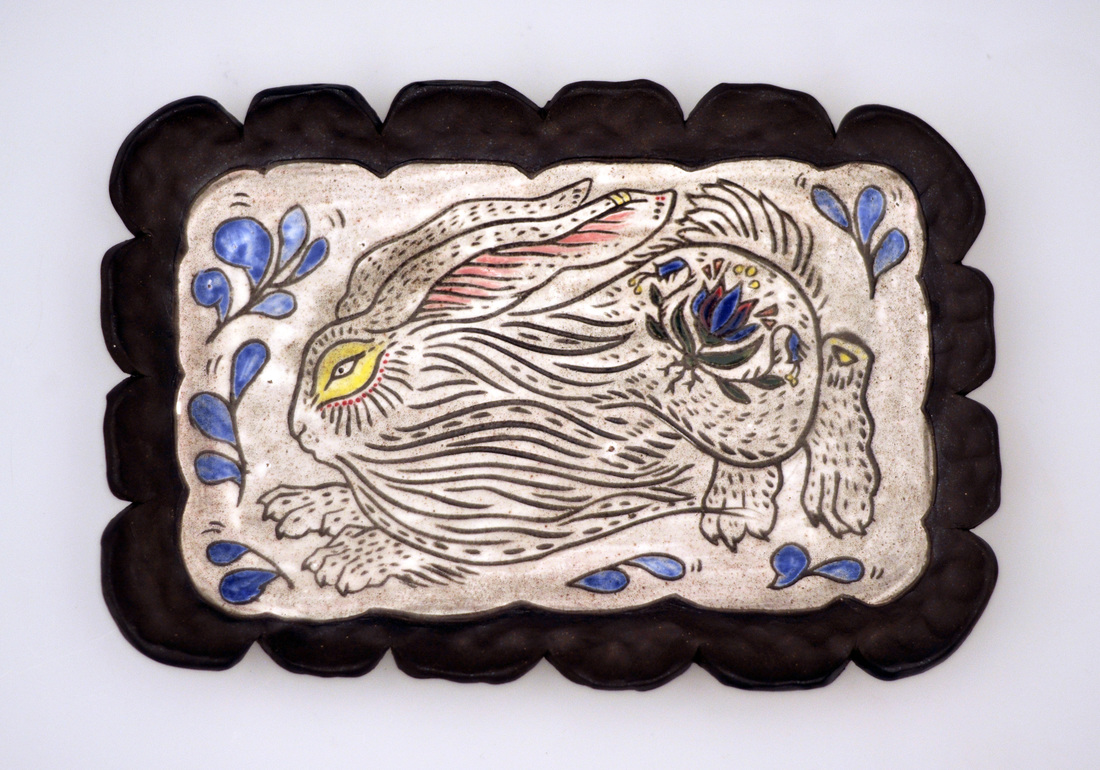
What do you think sets your designs apart from others?
Right now contemporary ceramics, both sculptural and functional, are really pushing boundaries. By incorporating elaborately layered illustrations on the surface of functional pieces, I feel as though we are part of that movement. When many think of handmade pottery, monochrome glazes and brown wood-fired stoneware often come to mind. I like to think we are showing people what is possible when it comes to surface treatments, and that does not always limit functionality. We are creating unique, individual art pieces that do not have to simply hang on the wall or sit on a shelf. Our pieces are meant to be used and enjoyed, and incorporated into intimate daily rituals.
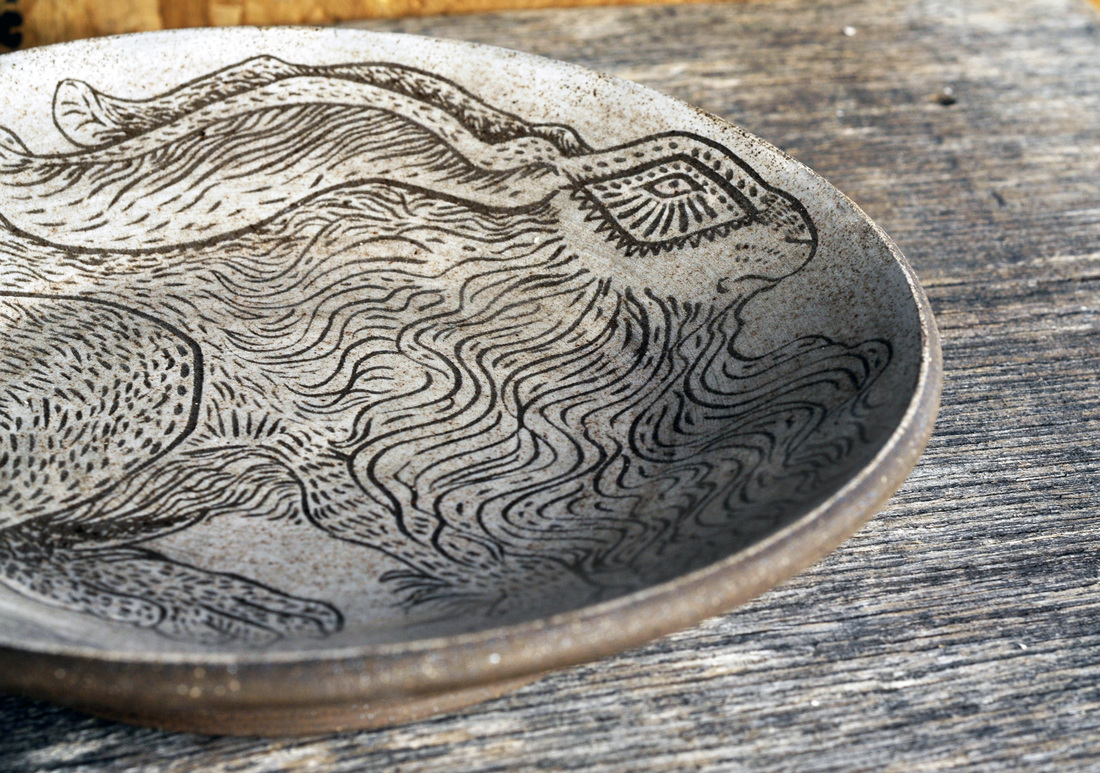
Have you had any major failures? If so, what were some important insights gained?
When you work in the field of ceramics, you are innately acquainted with failure, it is simply the nature of the medium! We have lost entire kiln loads of work due to the smallest technical error, which is completely tragic, but the most valuable learning experience you can imagine! There are just so many opportunities, steps, and stages to make mistakes when working with clay. Working in ceramics has been a humbling experience to say the least. I have learned to not get too attached to pieces or ideas, and to be ready to move on or make changes when failure arises, which I feel are important philosophies that can be applied to the business side of things as well.
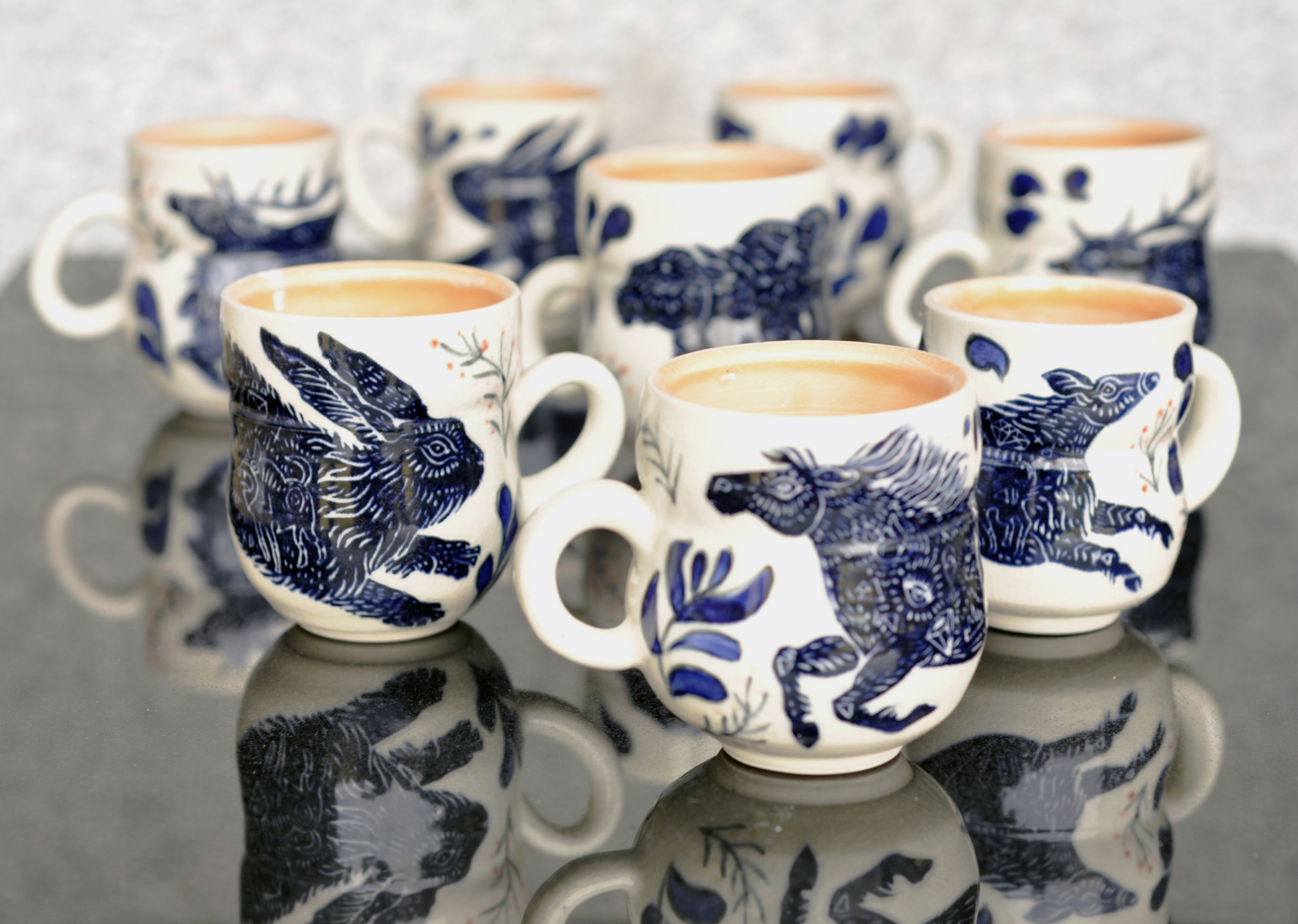
Have you sacrificed anything to create your business? If so, what was it, and do you have any regrets?
Initially, I wanted to teach for a living. I taught middle school art in the public school system for a few years, but quickly discovered that was not a suitable environment for me. When I made the decision to become a full-time studio artist, I had to let go of all the comforts that come with having such a job. It felt strange abandoning a vocation I had worked so tirelessly to attain, but I knew I needed to step away in order to attain clarity. Frederick has been amazingly supportive and encouraging along the way, which has been a tremendous comfort during times of uncertainty. I immersed myself in making work, and put all of my energy into finding opportunities for our business to grow. Things are now busy, fast, exciting, and terrifying all at once. And I have truly not looked back since.
What has been your proudest/favorite moment since creating your business?
I don’t feel as though I can pin down any specific moment in time, but I have to say I feel very proud and honored by the response we’ve received to the work we’ve been making. The amount of encouragement and positivity radiated by customers, family, and friends has been so humbling. It makes us feel as though we are doing something important and worthwhile, and gives us the gusto to move forward and continue improving our craft.
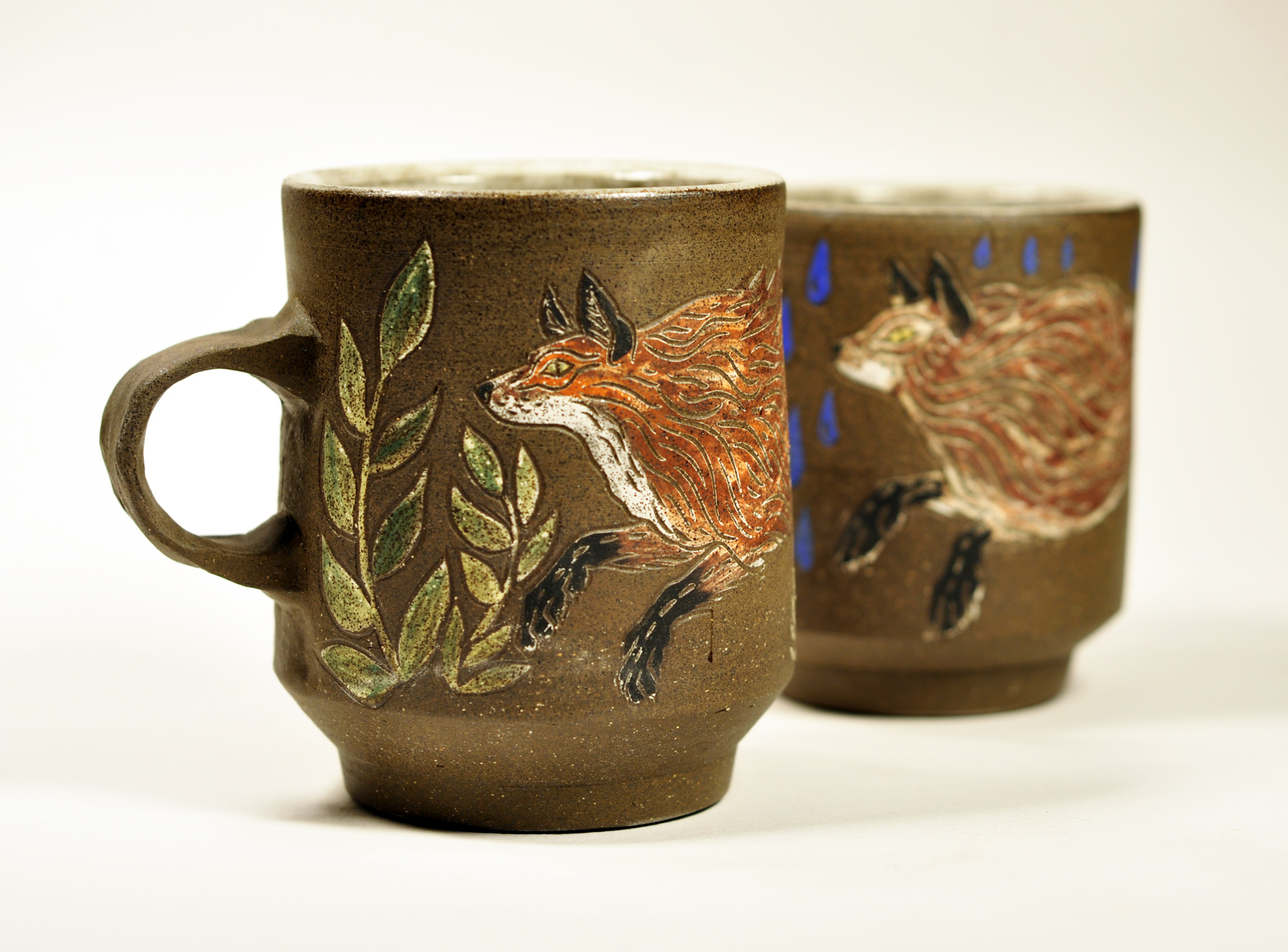
How does your city you live in influence your work?
Perhaps the question is more easily answered if you consider the lack of city where we work! We live in a rural town nestled in the Appalachian foothills of Kentucky. We have a small hillside farm on 13 acres of land. On the farm my retired quarter horse, Dusty, resides with his alpine goat friend, Dante. We also have chickens, a German shepherd, and two cats. Caring for our animals and tending our large garden provides a natural rhythm to our lives. The illustrations on our ceramic work are often inspired by happenings on the farm. I feel incredibly lucky to have a home studio where work and life become organically entangled and balanced.
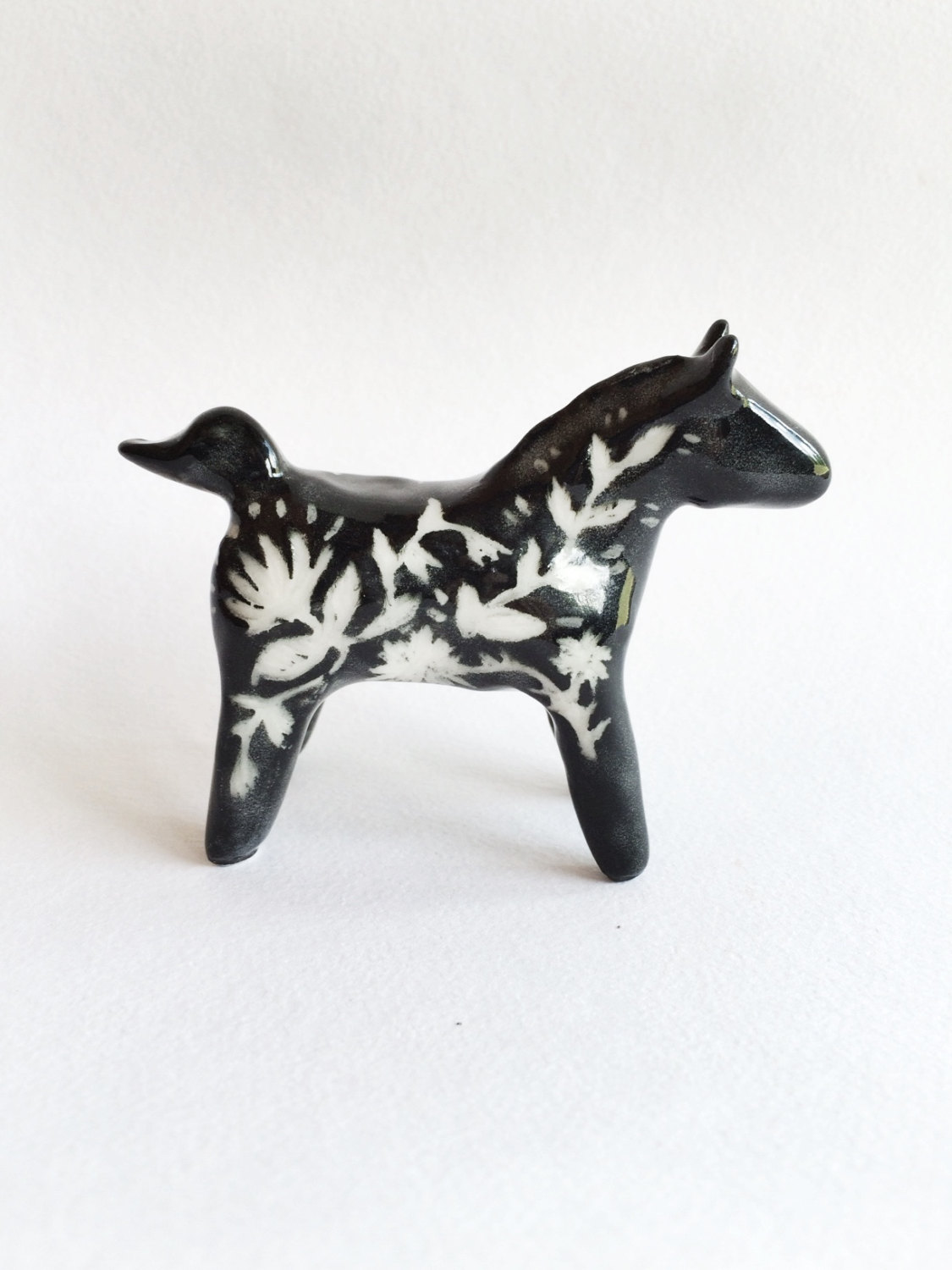
What valuable experience/knowledge did you have before starting your business?
We live in such an incredible time of conveniences. Any knowledge can be had instantaneously by a search engine click and the desire to learn. My diverse work background, penchant for self teaching, and curiosity of what could be soon became the driving force behind establishing our business. Frederick had spend time in the past as a studio artist and had valuable real life experiences to bring to the table. As a professor, Frederick is especially well connected within the ceramics world, so we were able to model much of our business after artists we admire who are successfully working in the field today.
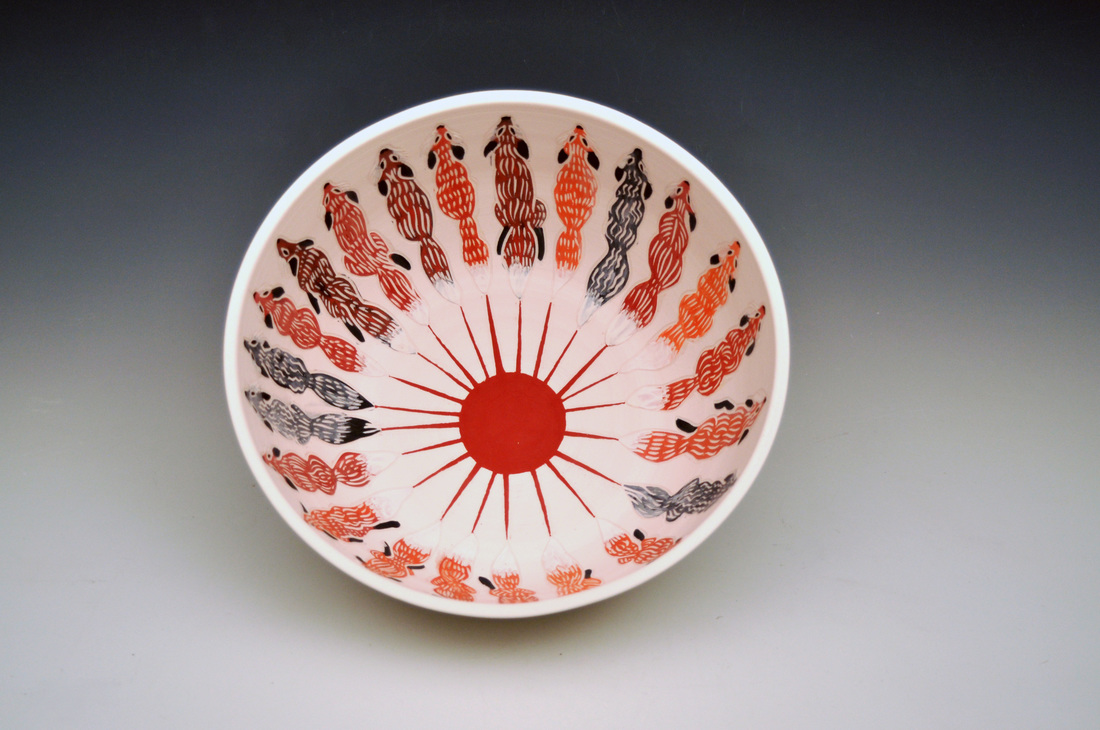
What made you take this leap into being your own boss?
It was a combination of feeling incredibly inspired by watching fellow makers pave their own way, and feeling somewhat unfulfilled with my job as a teacher. Stress and exhaustion were causing health issues that could no longer be ignored, and I eventually made the decision to take a leave of absence. It may sound cliché, but was during this time I made the decision to live a life that would make me excited about waking up on Monday morning. What is the saying, “Love what you do, and you will never work a day in your life”? Of course, Silver Run Ceramics would not have come to fruition without the love, support, and encouragement from my partner, Frederick.
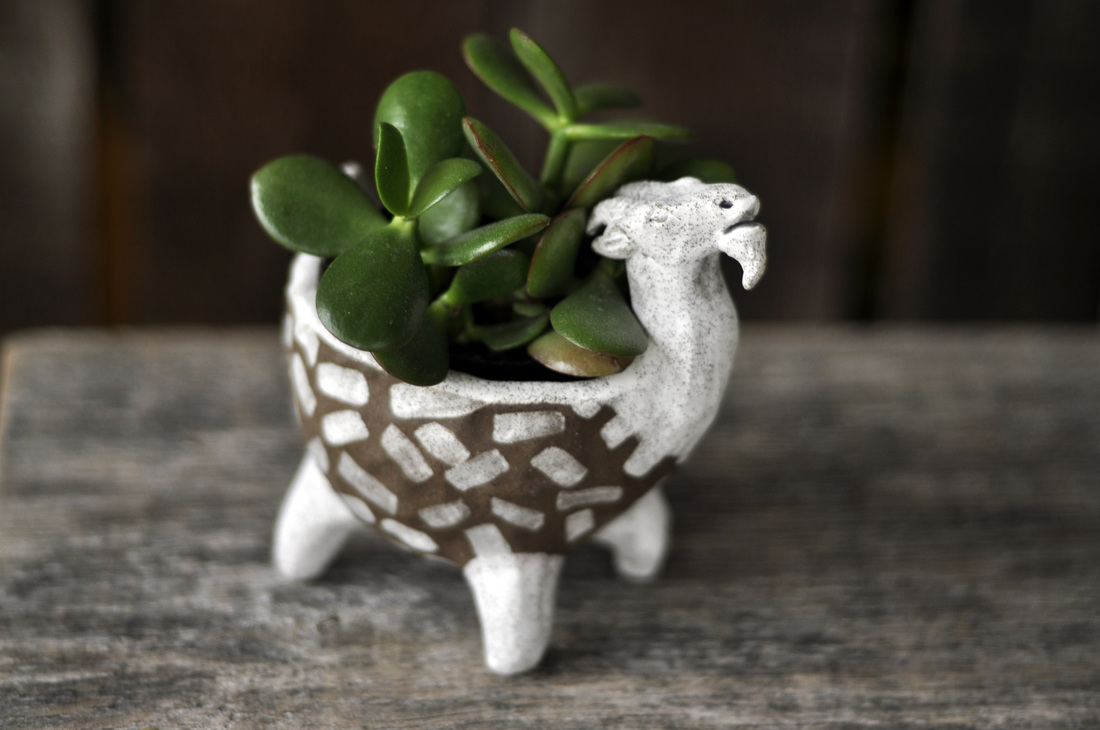
What are some inspirations for your work?
As mentioned before, I am a longtime observer of nature, and many of the illustrations on our pieces are inspired by our experiences on the farm. I also find myself drawn to a wide variety of visual sources, such as Mexican Milagros, tribal and primitive drawings, traditional symbols found in tattoo culture, and outsider/folk art. I consider myself a collector of these inspirations, which dwell in me, only later to transpire into the illustrated characters and themes found in our ceramic artwork.
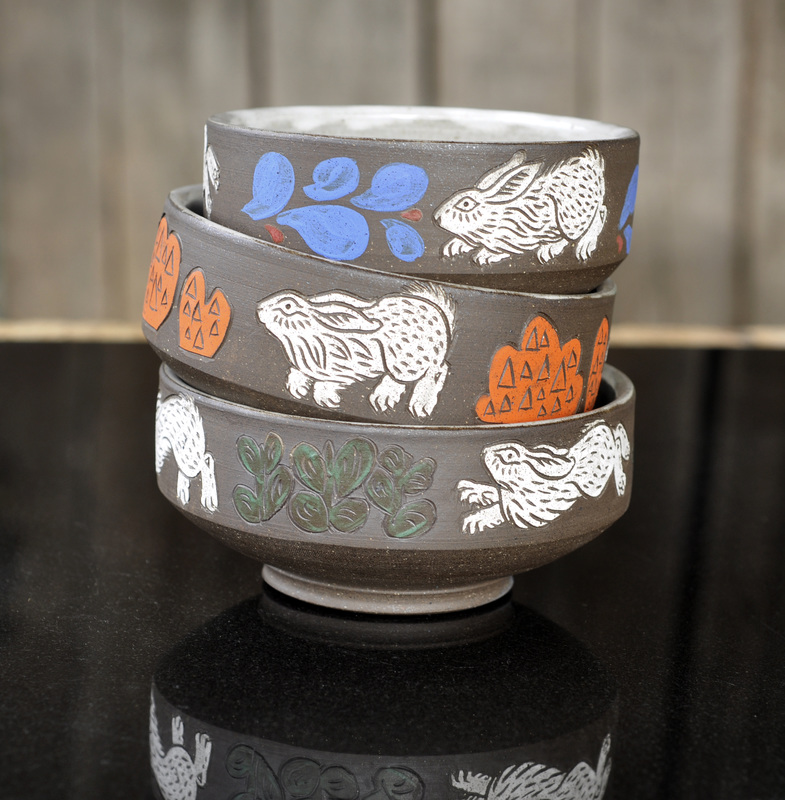
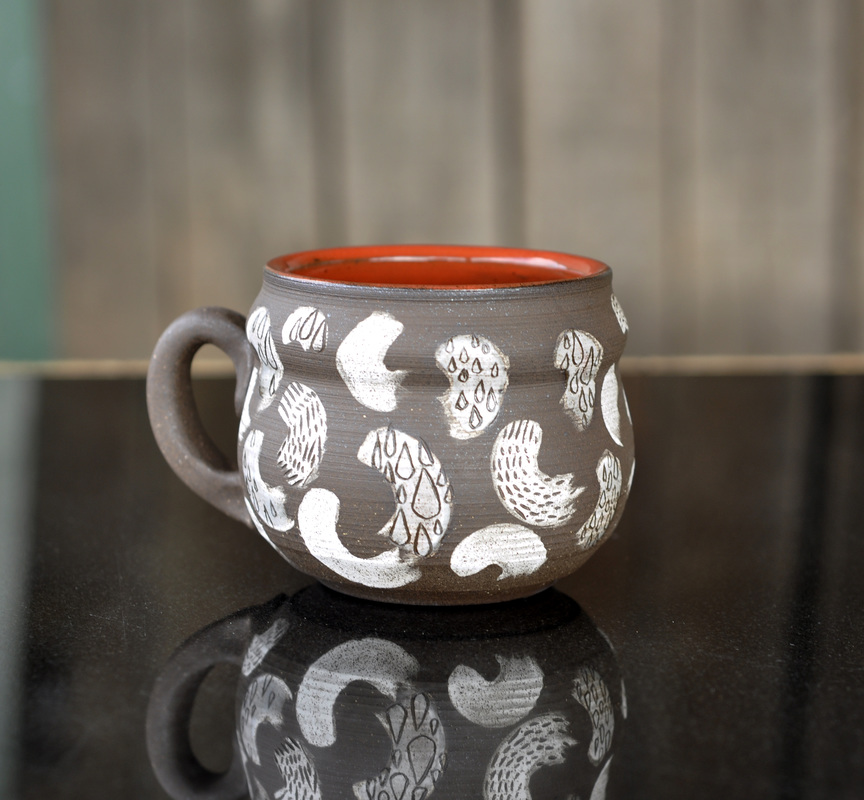
What are some tips or suggestions you’d like to offer to fellow makers?
Always keep moving forward. Create as many opportunities for yourself as possible. It is good to have a plan but also to remain flexible and adaptable to change. Make both long term and short term goals for yourself. Be prepared to work at any hour, all hours, whatever it may take. Trust yourself, and listen to your gut. It may sound silly, but try writing a specific list of things you would like to accomplish with your business in the next year. Tuck it away in a book and forget about it, and try revisiting it after the deadlines have past. You will be amazed with how your subconscious and intuition guide you towards the life that you want.
